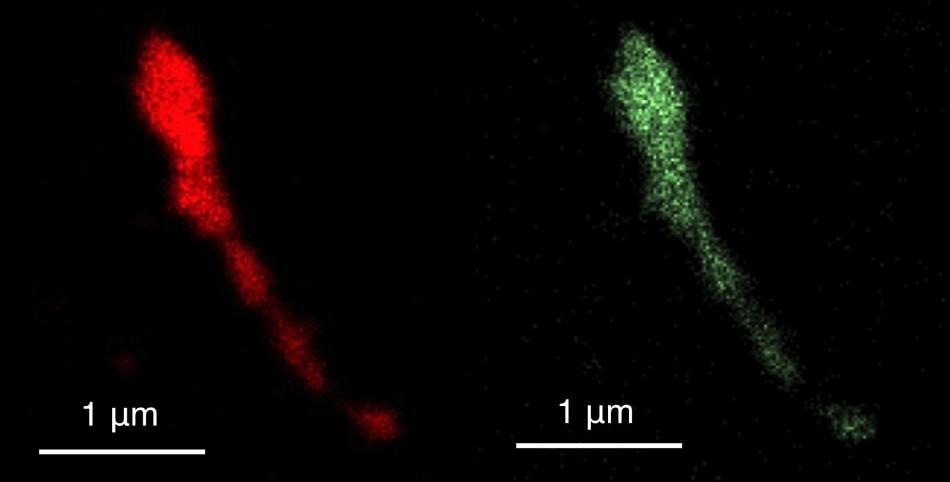Dec 6 2018
In a pioneering research, scientists have successfully formulated a method that could lead to extraordinary advances in computer speed and efficiency.
 This is an energy dispersive X-ray spectroscopy’s images of the sample of a solution with a virus. Color coding of atomic species: germanium, red; tin, green. (Image credit: SUTD)
This is an energy dispersive X-ray spectroscopy’s images of the sample of a solution with a virus. Color coding of atomic species: germanium, red; tin, green. (Image credit: SUTD)
Through this research, scientists Desmond Loke, Griffin Clausen, Jacqueline Ohmura, Tow-Chong Chong, and Angela Belcher have successfully formed a technique to “genetically” engineer an improved type of memory using a virus.
The scientists come from an alliance of institutions including the Massachusetts Institute of Technology and the Singapore University of Technology and Design (SUTD). The study was published online in the ACS Applied Nano Materials peer-reviewed journal on November 20, 2018.
The research explains that an important way in which faster computers can be realized is through the decrease of the millisecond time delays that usually come from the transfer and storage of information between a traditional random access memory (RAM) chip—which is fast but costly and volatile—meaning it requires power supply to retain information—and hard drive—which is nonvolatile but comparatively slow.
This is where phase-change memory comes into effect. Phase-change memory can be as quick as a RAM chip and can hold even more storage capacity than a hard drive. This memory technology employs a material that can reversibly switch between crystalline and amorphous states. However, up until this research, its use faced significant constraints.
A binary-type material, for example, gallium antimonide, could be used to create a better version of phase-change memory, but the use of this material can increase power consumption and it can experience material separation at about 620 K. Hence, it is difficult to add a binary-type material into existing integrated circuits, because it can separate at standard manufacturing temperatures at about 670 K.
“Our research team has found a way to overcome this major roadblock using tiny wire technology”, says Assistant Prof Desmond Loke from SUTD.
The traditional process of making minute wires can reach a temperature of about 720 K, a heat that makes a binary-type material to separate. For the first time in history, the scientists showed that by using the M13 bacteriophage—more universally known as a virus—a low-temperature construction of minute germanium-tin-oxide wires and memory can be realized.
This possibility leads the way to the elimination of the millisecond storage and transfer delays needed to progress modern computing.
Desmond Loke, Assistant Professor, SUTD
It looks like now the futuristic lightening quick supercomputers are more achievable than ever before.